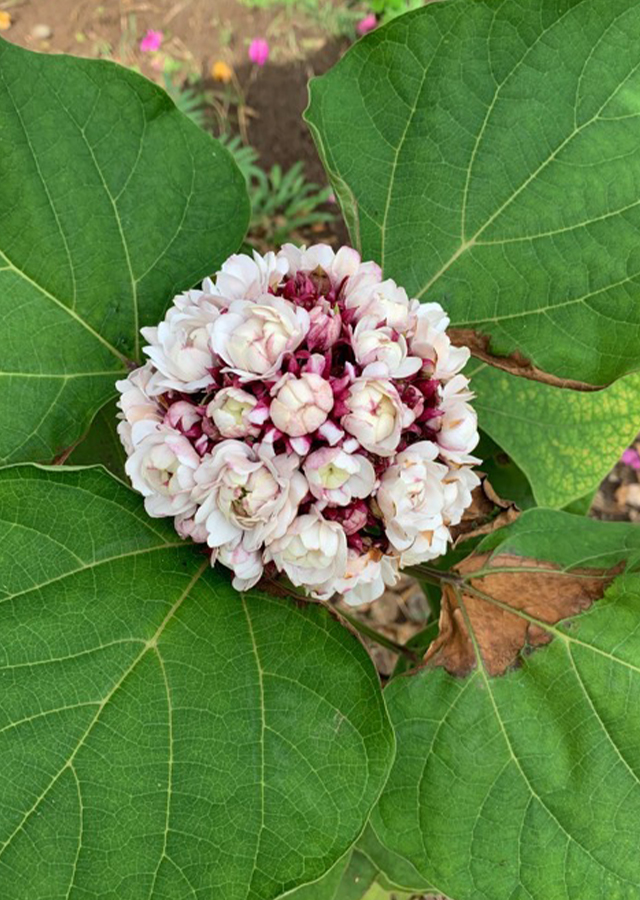Traditional Herbs from Clerodendrum chinense
sprains_and_broken_bones
- Prepare 10-20 g of stacked jasmine leaves and stems. Clean and wash then dry.
- Grush/finely grind the ingredients and add enough pure coconut oil.
- Apply on the affected area."] }
What is Clerodendrum chinense Looks like??



Parts of Clerodendrum chinense that could be used
Clerodendrum chinense Distribution
This plant probably comes from China and Vietnam. Now it is widely distributed in various tropical and subtropical countries, such as Florida, Hawaii, Mexico, the United States, South America, South China, Nepal, India, Myanmar, Thailand, Cambodia, Vietnam, the Philippines and Indonesia. This plant is often cultivated as an ornamental plant because it looks very decorative and smells good. The roots and leaves have long been used in traditional Chinese medicine. The results of the study show that the leaves of this plant have many chemical activities, including antidiabetic, pain reliever, etc.
Agroecology of Clerodendrum chinense
It grows in grasslands, roadsides, river banks, bushes and secondary forests up to an altitude of 1,200-2,000 m above sea level. Grows well in full sun, but is still shade tolerant.
Morphology of Clerodendrum chinense
- The stem and branches have a rectangular shape.
- The leaves are oval, pointed at the tip and blunt at the base. The leaves are located opposite each other.
- The flowers are short-stemmed, have a fragrant smell with purple or red petals that measuring about 10-15 mm, sometimes there are white spots. The flower crown is white to whitish pink.
- Fruit rarely forms.
Cultivation of Clerodendrum chinense
- Propagation generatively (seeds), as well as vegetatively (root cuttings).
- Germination occurs for 20-60 days at a temperature of 20\u00b0C, when large enough, separate the sprouts and plant each in a pot.
- Vegetative (root cuttings) by cutting the roots 6-8 cm then planting and separating the saplings).
Clerodendrum chinense, more details :
Chemical Content of Clerodendrum chinense
Phenolics, steroids, flavonoids, terpenes, essential oils, verbascoside, isoverbascoside, decaffeoylverbascoside, hispidulin, lupeol, icariside B5, cornoside, rengyolone.
Benefits of Clerodendrum chinense
Treating asthma, rheumatism, skin diseases, lumbago, jaundice, coughs, malaria, sprains, fractures, activity as an antioxidant, antiseptic, antidiuretic, anti-inflammatory.
Simplisia of Clerodendrum chinense
- Pick Papuan jasmine leaves. Wash until clean then drain.
- Arrange the leaves in a tray then dry in the sun for 7 days.
- After drying, pack in an airtight container.
Another Facts for Clerodendrum chinense :
Synonym of Clerodendrum chinense
Agricolaea fragrans (Vent.) Schrank, Clerodendrum chinense var. hamrense Das, Sarma & Borthakur, Clerodendrum chinense var. parviflorum M.R.Almeida
Habitus of Clerodendrum chinense
Bush. Annual shrub, reaching 2.5-3 m in height
Habitat of Clerodendrum chinense
- Wetland", "Riverside", "Forest", "Grassland



No comments:
Post a Comment